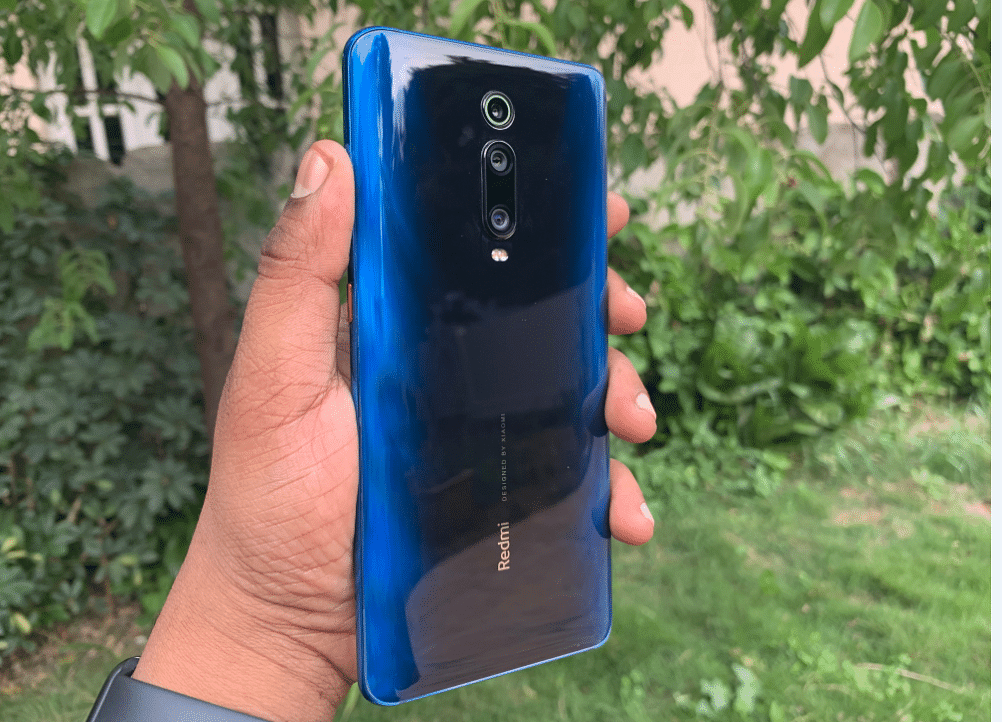
Xiaomi launched the brand new mobile Redmi K20 series on July 22 in India. It comes with two variants -- one a generic Redmi K20 and a top-end Redmi K20 Pro -- with prices starting at Rs 21,999 and Rs 27,999, respectively.
I have been using the Redmi K20 for more than two weeks and here are my observations.
Display, design and build quality:
The Redmi K20 (and its identical twin K20 Pro) is one of the best looking phones in the sub-Rs 30,000 price bracket. It boasts Prime Aura design, which exudes a flame-inspired outline all around the edge of the shell. My Glacier Blue looks stunning in the sunlight.
Also, I love the matching accents such as the crimson-hued power button on the right and the reflective halo around the primary camera on the back, which make the device visually appealing.
And when held in the hand, I felt the premium quality glass (Corning Gorilla Glass 5) and metal body. However, the phone is a bit slippery and a magnet for fingerprint smudges too.
Thankfully, the company is offering a sturdy case with the retail box and it does a fine job of protecting the phone and offering a good grip for the hand. Also, the Redmi K20 Pro comes with a P2i coating, meaning that it can withstand accidental water splashes and light rain.
The company is also selling colourful silicone-based shell cases separately for Rs 799 (MRP) on the Mi store. They are soft, sturdy and offer a really good grip.
The Redmi K20 flaunts a 6.39-inch full HD+ AMOLED display with 600 nits brightness and thanks to a pop-up camera mechanism, most of the front panel is covered by the functional display. With no notch, I had a delightful experience watching HD videos without obstructions on the phone.
The one issue I have with the Redmi K20 is the in-screen fingerprint sensor. It is noticeably slower than the physical sensor, which comes in the Redmi Note 7 series. However, it's not a deal-breaker, as the FRR (False Rejection Rate) is very low.
Performance:
Xiaomi's Redmi K20 houses a Qualcomm Snapdragon 730 octa-core (2.2GHz core x 2 + 1.8GHz x 6) with Adreno 618 GPU backed by Android Pie-based MIUI 10 OS, 6GB RAM (LPDDR4X) and 64GB/128GB storage (UFS 2.1).
It works buttery smooth when switching between multiple apps, launching the camera or even playing a graphics-intense game like Asphalt 9. The Redmi K20 showed no hint of lag.
Also, despite the device's shell of glass and metal, it did not overheat during an extended gameplay session. Also, the battery did not drain faster, which indicates that the hardware and software is well optimised to function smoothly even when pushed to the limits.
On Geekbench 4, it scored impressive 2,555 and 6,934 points on single-core and multi-core tests. And on AnTuTu, it got a respectable 211,104 points.
As far as the MIUI 10 interface is concerned, it offers numerous helpful shortcuts, themes, system-wide dark mode and more functionalities such as dual apps (where users can access two WhatsApp or Facebook accounts) compared to stock Android. Xiaomi's apps such as Mi Video and others push unwanted notifications to the lock screen, but it is very less compared to the other Redmi series phones.
Camera:
The Redmi K20 comes with a feature-rich triple-camera module, having one 48MP (Sony IMX582) primary sensor, a 8MP telephoto lens, and a 13MP ultra-wide-angle sensor.
With such top-notch hardware, the Redmi K20 did not disappoint. It takes stunning images in almost all conditions be it natural light, twilight or in darkness and even in a controlled environment like a room.
It was able to retain the natural colour of the subject be it a flower or a person in most cases. The portrait mode and night mode did their jobs well. You should also check out the sky filter. It can turn the lighting to cloudy, sunny and you can throw in a rainbow into the mix. It's really fun and enhances the photography experience.
The 20MP pop-up front-camera module, which is laced with LED light enhances the visual appeal and I appreciate the company for utilising the same for notification alerts. When the camera is inside the phone, and when a message comes, the LED lights up in the circular form.
As far as picture quality is concerned, it takes top quality selfies and the company has incorporated value-added filters, which the millennials will enjoy showcasing on social media channels.
Primary camera: 48MP (with 1/2-inch Sony IMX582, F1.75 aperture,0.8um pixel size, 6P lens) + 8MP telephoto lens (with 1/4-inch OV8856 sensor, F2.4 aperture, 1.12um pixel size, 2 x lossless zoom)+ 13MP 124.8-degree ultra-wide angle lens (with 1/3-inch Samsung S5K3L6,F2.4 aperture, 1.12um pixel size), auto laser focus and LED flash
Front camera: 20MP sensor with F2.2 aperture, 0.8um pixel size
Battery:
With a 4,000mAh cell and 18W fast charging capability, the Redmi K20 lived up to expectations. During the testing period, it consistently delivered a full day of battery life under normal usage, including web browsing, video streaming on YouTube, playing games, photo snapping and video recording sessions.
If you use the phone a little more conservatively, Xiaomi phone can last two days. And in standby mode, it can easily last a whole week if not more.
Final thoughts:
With the feature-rich Redmi A and Note series, Xiaomi has populated the Indian mobile market with numerous variants that range from Rs 5,999 to Rs 17,000, leaving very little space for rivals to win the attention of consumers. This is evident from the fact that Xiaomi was able to top the charts within four years of debuting in India. It has continued to widen the gap in the last year.
Having managed to bring the salaried class into its fold, Xiaomi is aiming to attract a new section of consumers who look for cost-effective premium phones with the latest features. This segment was primarily ruled by OnePlus and now, Xiaomi, which gained quite some ground with the Poco F1 in 2018, is bringing the new Redmi K20 series to get into a full-fledged price war in the upper Rs 20,000 segment.
Having used the Redmi K20, I can say with confidence that Xiaomi has a winner on its hands and may soon dominate the premium mid-range phone segment and beyond.
Pros:
Premium build quality and visually appealing design language
Very impressive camera
Long-lasting battery
Reliable processor
Cons:
The in-screen fingerprint is a bit slow
Get the latest news on new launches, gadget reviews, apps and more on personal technology only on DH Tech.
